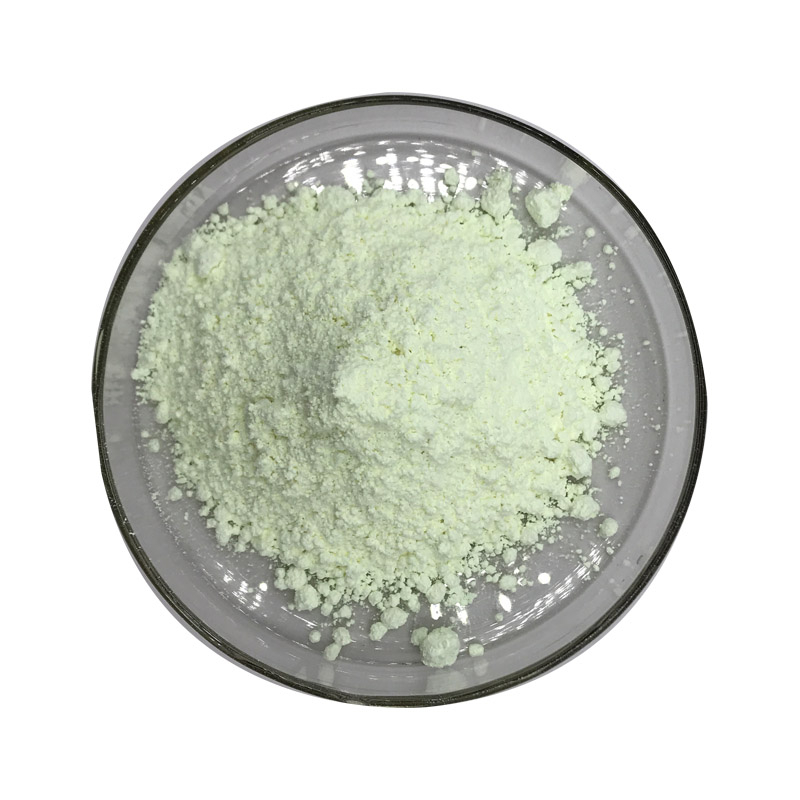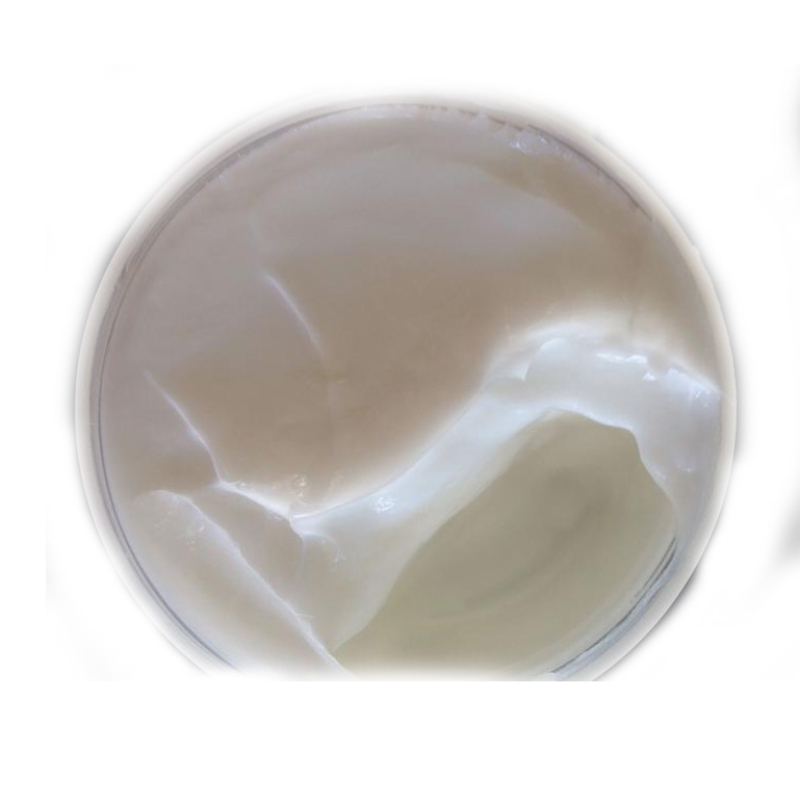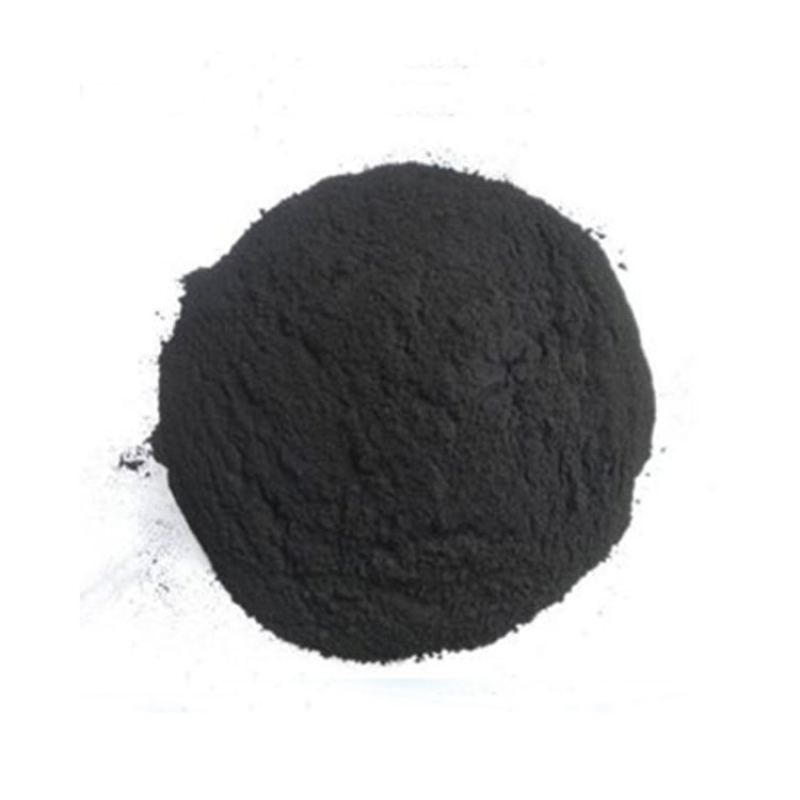Products Description of 4,5-Dichloro-3(2H)-pyridazinone CAS#932-22-94,5-Dichloropyridazin-3(2H)-one is an organic intermediate that can be used to prepare thiadiazole compounds 4-chloro-2-[(5-ethoxy-1,3,4-thiadiazole-2-)methyl]-5-piperidinyl-3(2H)-pyridazinone.
Contact Now
Products Description of 6-Methylpyridazin-3(2H)-One CAS#13327-27-06-Methyl-3(2H)-pyridazinone is a yellow crystalline powder with a melting point of 138°C.
Contact Now
Products Description of 6-Chloropyridazin-3-amine CAS#5469-69-23-Amino-6-chloropyridazine is a novel pharmaceutical intermediate with great medical value and is difficult to synthesize. 3-Amino-6-chloropyridazine compounds are a class of heterocyclic compounds with good biological activity and occupy an important position in pesticide research. In pesticide production, structural modification using pyridazinone ring as the parent has opened up a new field for the creation of new pesticides.
Contact Now
Products Description of 2-Amino-5-Methyl-3-Thiophenecarbonitrile CAS#138564-58-6An impurity generated in the preparation of Olanzapine.2-Amino-5-Methyl-3-Thiophenecarbonitrile Chemical PropertiesMelting point 101-103°CBoiling point 318.5±42.0 °C(Predicted)density 1.26±0.1 g/cm3(Predicted)storage temp. under inert gas (nitrogen or Argon) at 2–8 °Csolubility soluble in Methanolform powder to crystalpka0.16±0.10(Predicted)color Light yellow to BrownInChIKeyYGXADLPRHBRTPG-UHFFFAOYSA-NCAS DataBase Reference138564-58-6(CAS DataBase Reference)Safety Information
Contact Now
Products Description of Methyl 3-amino-2-pyrazinecarboxylate CAS#16298-03-6The molar refractive index of methyl 3-aminopyrazine-2-carboxylate is 38.44, the molar volume (m3/mol) is 116.0, the isotonic volume (0.2K) is 326.2, the surface tension (dyne/cm) is 62.4, and the polarizability (10-24cm3) is 15.24.Methyl 3-amino-2-pyrazinecarboxylate Chemical PropertiesMelting point 169-172 °C (lit.)Boiling point 300.8±37.0 °C(Predicted)density 1.319±0.06 g/cm3(Predicted)storage temp. Keep in dark place,Sealed in dry,2-8°Csolubility Chloroform, Methanolform Crystallin
Contact Now
Products Description of Diammonium 2,2'-azino-bis(3-ethylbenzothiazoline-6-sulfonate)CAS#30931-67-0ABTS diammonium salt is a substrate for horseradish peroxidase (HRP).Diammonium 2,2'-azino-bis(3-ethylbenzothiazoline-6-sulfonate) Chemical PropertiesMelting point >181oC (dec.)storage temp. 2-8°Csolubility H2O: 50 mg/mL, very slightly hazy, greenform tabletcolor Pale Green to Light GreenPHpH(50g/l, 25℃) : 5.0~6.0Water Solubility Dissolve in water at 50mg/ml.
Contact Now
Products Description of Isobornyl methacrylate CAS#7534-94-3Isobornyl methacrylate is a colorless, transparent liquid. Isobornyl methacrylate is a monomer that combines hardness and flexibility. Due to its molecular structure, its polymer has excellent high gloss, vividness, scratch resistance, medium resistance and weather resistance, and its hygroscopicity is significantly lower than that of MMA (methyl methacrylate).
Contact Now
Products Description of 3-Pyridazinecarboxylic Acid CAS#2164-61-63-Carboxypyridazine is a heterocyclic derivative that can be used as a pharmaceutical intermediate in pharmaceutical experimental research and pharmaceutical synthesis.3-Pyridazinecarboxylic Acid CAS#2164-61-6 Chemical PropertiesMelting point 200-209 °CBoiling point 404.2±18.0 °C(Predicted)density 1.403±0.06 g/cm3(Predicted)storage temp. Keep in dark place,Sealed in dry,Room Temperatureform solidpka3.65±0.10(Predicted)Safety InformationHazard Codes XiRisk Statements 36/37/38Safet
Contact Now
Products Description of 3-Chloro-6-methylpyridazine CAS#1121-79-53-Chloro-6-methylpyridazine is a heterocyclic compound and chemical raw material. It has a low melting point and boiling point, and is usually light yellow to light beige in powder form.
Contact Now
5-Methyl-1H-benzotriazole CAS#136-85-6The pure product is usually white to off-white granules or powder, but the actual product may vary slightly due to factors such as purity.Melting point: 80-86℃.Solubility: Hardly soluble in water, soluble in organic solvents such as alcohol, benzene, toluene, chloroform, and also soluble in dilute alkali solution.
Contact Now
Products Description of Crystal Violet CAS#548-62-9Gentian violet, also known as crystal violet and basic violet 3, is a commonly used artificial basic dye along with methyl green, neutral red, methylene blue, safranin, hematoxylin, malachite green, methyl violet and basic fuchsin. The dye index number is CIBasicViolet3(42555). It belongs to the triaminotriphenylmethane compound. It has the appearance of dark green powder or flaky crystals with bronze luster.
Contact Now
Products Description of SODIUM METHYL COCOYL TAURATE CAS#12765-39-8Sodium Methyl Cocoyl Taurate (SMCT), also known as sodium methyl coconut taurate and sodium methyl coconut taurate, has a chemical structure of RCON (CH3) CH2CH2SO3Na. It is an amino acid surfactant, a milky white viscous paste at room temperature, a 1% aqueous solution with a pH of 6.5-9.0, active matter >38%, coconut oil soap <2%, and color (APHA) ≤300. It is a milder surfactant than SLS, less irritating to the skin, and has good cleaning power.
Contact Now
Products Description of Palladium CAS#7440-05-3Palladium is a transition element of Group III (nickel group) and light platinum metal in the periodic table. It is a silvery-white metal that is moderately hard, moderately forgeable, and ductile. Palladium is an intermediate element in Group 10 of transition elements (periods 4, 5, and 6). Many of its properties are similar to those of nickel, which is above it, and platinum, which is below it, in this group. Palladium is a soft, silvery-white metal that has chemical and physical properties very similar to those of platinum.
Contact Now
Products Description of 2,5-Dibromothiophene CAS#3141-27-32,5-Dibromothiophene is the light yellow transparent liquid, boiling point 211℃, melting point -6℃, relative density 2.147.2,5-Dibromothiophene Chemical PropertiesMelting point -6 °C (lit.)Boiling point 211 °C (lit.)density 2.147 g/mL at 25 °C (lit.)refractive index 1.627-1.63Fp 99 °Cstorage temp. Keep in dark place,Sealed in dry,Room Temperaturesolubility Chloroform, Methanolform Liquidcolor Clear pale yellow to brownSpecific Gravity2.147Water Solubility practically insol
Contact Now
Products Description of 2-Hydroxy-3-trifluoromethylpyridineCAS#22245-83-62-Hydroxy-3-trifluoromethylpyridine, as a pyridine derivative, plays an important intermediate role in the chemical industry, medical and pesticide fields, etc.2-Hydroxy-3-trifluoromethylpyridine Chemical PropertiesMelting point 150-153°CBoiling point 223.7±40.0 °C(Predicted)density 1.398±0.06 g/cm3(Predicted)storage temp. Inert atmosphere,Room Temperatureform powder to crystalpka9.67±0.10(Predicted)color White to Almost whiteInChIInChI=1S/C6H4F3NO/c7-6(8,9)4-2-1-3-10-5(4)11/h1-3H,(H,10,
Contact Now
Products Description of Methyl 3-amino-4-methylthiophene-2-carboxylate CAS#85006-31-1Methyl 3-amino-4-methylthiophene-2-carboxylate is an organic raw material.Methyl 3-amino-4-methylthiophene-2-carboxylate CAS#85006-31-1 Chemical PropertiesMelting point 85-88 °C (lit.)Boiling point 318.6±37.0 °C(Predicted)density 1.264±0.06 g/cm3(Predicted)Fp >100°Cstorage temp. Keep in dark place,Sealed in dry,Room Temperaturesolubility Chloroform (Slightly), Methanol (Slightly)pka1.71±0.10(Predicted)form Solidcolor Pale YellowWater Solubility 1g/L at 35℃BR
Contact Now
Methyl Methacrylate CAS#80-62-6Methyl methacrylate is an natural compound with the system CH2=C(CH3)COOCH3. This colourless liquid, the methyl ester of methacrylic acid (MAA) is a monomer produced on a giant scale for the manufacturing of poly(methyl methacrylate) (PMMA).Methyl methacrylate is a methyl ester of methacrylic acid. It is a colourless, risky liquid with an acrid fruity odour.
Contact Now
Products Description of 3-Amino-4-bromo-6-chloropyridazine CAS#446273-59-23-Amino-4-bromo-6-chloropyridazine is a chemical substance with the chemical formula C4H3BrClN3. 3-Amino-4-bromo-6-chloropyridazine CAS#446273-59-2 Chemical PropertiesBoiling point 385.4±37.0 °C(Predicted)density 1.960storage temp. under inert gas (nitrogen or Argon) at 2–8 °Cpka1.93±0.10(Predicted)form powdercolor Light brown to brownSafety InformationHazard Codes TRisk Statements 25Safety Statements 45RIDADR UN2811HS Code 2933998090Product Application of
Contact Now
Products Description of 4-Methyl-2-pentanone CAS#108-10-14-Methyl-2-pentanone (methyl isobutyl ketone) reagent is widely used as a solvent in chemical and pharmaceutical industries, separation and recovery of nuclear fission products, and scientific research experiments. The content of 4-methyl-2-pentanone sold on the market is ≤99%, and it contains a small amount of impurities such as alcohol, acidic substances and water. 4-Methyl-2-pentanone is used as a solvent for nitrocellulose, lacquer, and certain polymers and resins.
Contact Now
Products Description of Potassium methyl siliconate CAS#31795-24-1potassium methylsilanetriolate Chemical PropertiesBoiling point 112℃[at 101 325 Pa]density 1.388[at 20℃]Specific Gravity1.29Hydrolytic Sensitivity0: forms stable aqueous solutionsLogP0.780 (est)EPA Substance Registry SystemSilanetriol, methyl-, potassium salt (31795-24-1)Product Application of Potassium methyl siliconate CAS#31795-24-1Methylsilanetriol potassium salt is mainly used as surface treatment agent and catalyst.
Contact Now
Products Description of 3-Pyridylacetic Acid Hydrochloride CAS#6419-36-93-Pyridine acetate hydrochloride is a colorless solid with m.p.161~163℃, soluble in water.3-Pyridylacetic Acid Hydrochloride Chemical PropertiesMelting point 161-163 °C(lit.)storage temp. Inert atmosphere,Room Temperaturesolubility DMSO (Sparingly), Methanol (Slightly)form Crystalline Powder, Crystals and/or Chunkscolor White to light yellow or beigeMerck 14,7971BRN 3696630Stability:HygroscopicInChIInChI=1S/C7H7NO2.ClH/c9-7(10)4-6-2-1-3-8-5-6;/h1-3,5H,4H2,(H,9,10);1HInChIKe
Contact Now
Products Description of Tris(2-methyl-1-aziridinyl)phosphine oxideCAS#57-39-6It is mainly used as a crosslinking agent and curing agent for the resin coating of missiles.
Contact Now
Products Description of 2-Amino-6-chlorobenzoic acid CAS#2148-56-32-Amino-6-chlorobenzoic acid is a reactive compound that can be used as an antimicrobial agent. It binds to the active site of enzymes and inhibits their function, thereby preventing bacterial growth. It has acidic properties, which may be due to its ability to act as a dehydrating agent to hydrolyze esters.
Contact Now
Products Description of N-Methyl-2-pyrrolidone CAS#2687-44-7N-methyl-2-pyrrolidone is a nitrogen-containing five-membered heterocyclic compound. It has a wide range of applications due to its following excellent properties: It has high polarity and is completely miscible in most organic solvents (alcohols, ethers, ketones, aromatic hydrocarbons, chlorinated hydrocarbons, etc.). It has high solubility in organic and inorganic substances. It can be miscible with water in any proportion. It has a higher flash point than other similar solvents.
Contact Now


































